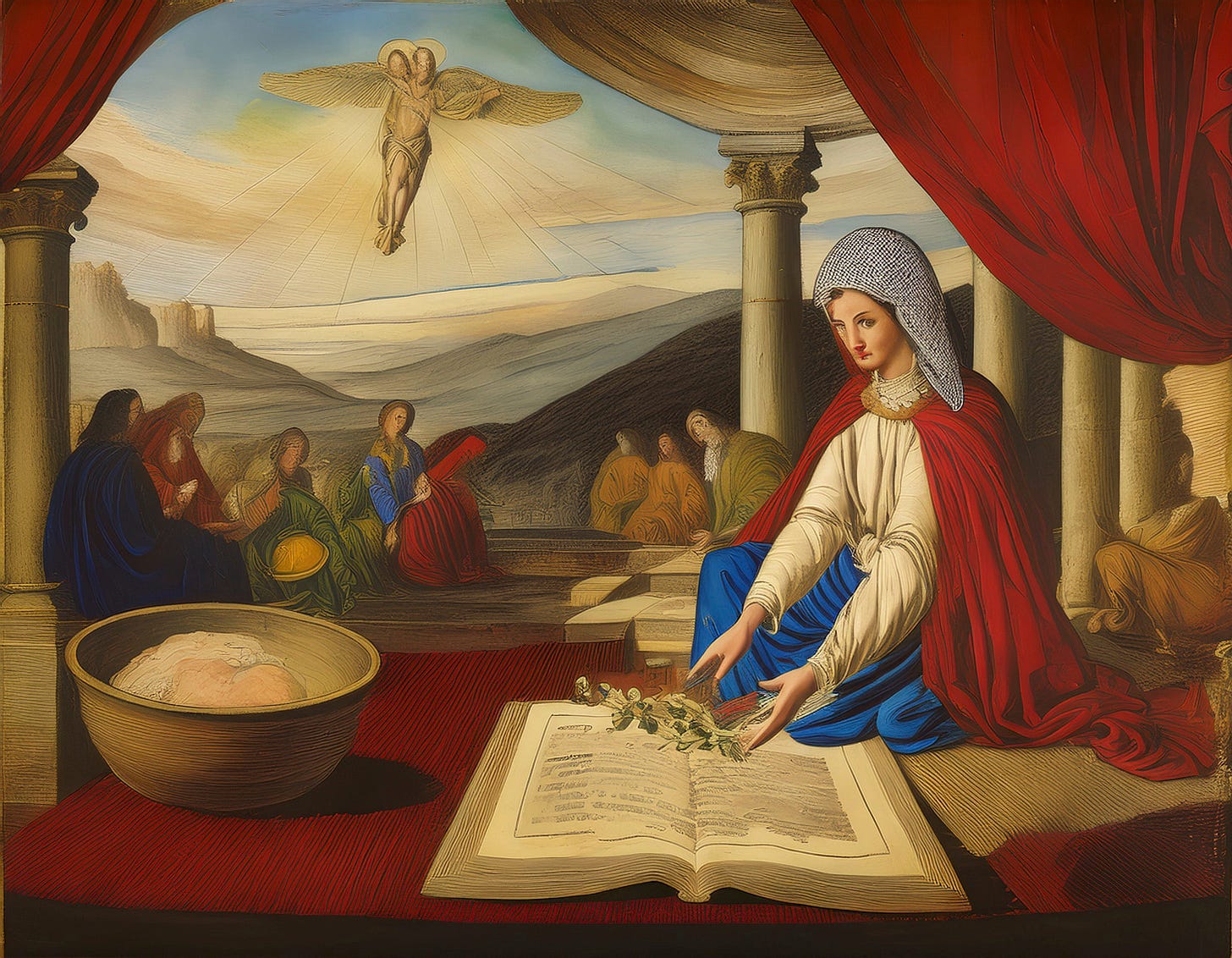The Long-Lost Road to Gilead:
Looking for Hope in All the Wrong Places
We look for peace, but find no good,
for a time of healing, but there is terror instead …
Is there no balm in Gilead? (Jer. 8:15,22)
In novelist Margaret Atwood’s 1985 book, “The Handmaid’s Tale,” a radical, religiously-inspired political group – calling themselves the “Sons of Jacob” -- storm the U.S. Capitol, establishing a fundamentalist theocracy. The new regime – located in Washington, DC -- is named Gilead; with its name taken from the ancient tale from the Book of Jeremiah. That tale envisioned a healing balm to cure all human ills. But in Atwood’s fictional story, women are simply subordinated with their reproductive rights restricted. So, the heroine flees to Canada …
Forty years since Atwood’s novel was published, actual “real life” events have taken place that may sound alarmingly familiar to what the novelist once described. The world as we know it remains torn asunder. Nations rise up against nations. The rich and the powerful hold sway, while the poor and disenfranchised perish in vain hope of something else, somewhere else.
Presumably, there is a healing “balm of Gilead,” the prophet Jeremiah first declared six centuries BCE (from the Hebrew Bible, Jer. 8:22). Subsequently, the phrase itself has become a form of figurative speech to signify a curative salve for all human ills.
Geographically, Gilead is a mountainous region in what is now the nation of Jordan. But neither literally, nor figuratively, we might readily conclude we’ve yet to reach that mountaintop. However, perhaps such a long sought-after destination is of another sort, and remains forever within reach.
One Ritual Reenactment to Point the Way
“There is a balm in Gilead
to make the wounded whole.
There is a balm in Gilead
to heal the sinsick soul.”Traditional African-American spiritual
The old spiritual quoted above was meant to provide some reassurance to the enslaved and downtrodden that a savior figure would redeem their plight; with Jesus being that messianic figure. While I may not share the same belief structure about what redemption might mean, I do recall the many years I practiced the ritual of declaring the curative power of what could be understood as a healing balm from the Christian faith tradition.
First, there are those stories of so-called miraculous healings which the gospels describe. There’s the one where Jesus defies the prevailing, dominant religious convention by healing on the Sabbath; in order to restore the sick and lame (Mk. 3:1-6).
Then there is that ritual re-enactment in the Christian faith tradition of spiritually healing with some balm, of sorts. It’s known as the oil of Chrism. Traditionally, it’s a blend of olive oil and balsam.
But that same balm is also given baptismal candidates when initiated into the “body of Christ” to follow; both by the example set by one accorded the title ‘lord,’ and on what might otherwise seem to be a meandering itinerant’s path, as well.
In the that ritual I administered for decades, I’d splash the forehead with water, then wipe it dry. Then dipping my thumb into the oil stock, I’d mark the baptismal candidate’s forehead with a sign of the cross; symbolically joining them with those who had already taken up the path to accept the Galilean sage’s invitation to follow.
However, at the conclusion of the traditional ritual, I would also add an additional blessing that was essentially a charge, or commissioning, of sorts. Borrowed from a dear friend and colleague – which he’d partially adapted himself -- I’d briefly touch the newly-baptized five more times, and utter:
I bless your eyes, that you may see the face of Christ (Jesus) in all people.
I bless your lips, that you may speak the gospel of Christ (Jesus).
I bless your ears, that you may always hear the cry of the poor.
I bless your hands, that everything you give and receive may be a sacrament. And,
I bless your feet, that you may always run to those who need you. *(credits below)
At that moment – and, in that time and place -- one might wonder if we’d already reached the mountaintop called Gilead. If only such a balm received — and commission given — might be enough to one day truly redeem our own human story.
jb
* The first two blessings mentioned above were adapted from Frederick Buechner’s novel, Godric. And the last three blessings were crafted by Episcopal Bishop John Thornton.
To learn more about John Bennison, click Here. To read more commentaries by this writer from the perspective of a Christian progressive go to the Archives Here.
© 2025 by John William Bennison, Rel.D. All rights reserved. This article should only be used or reproduced with proper credit.





